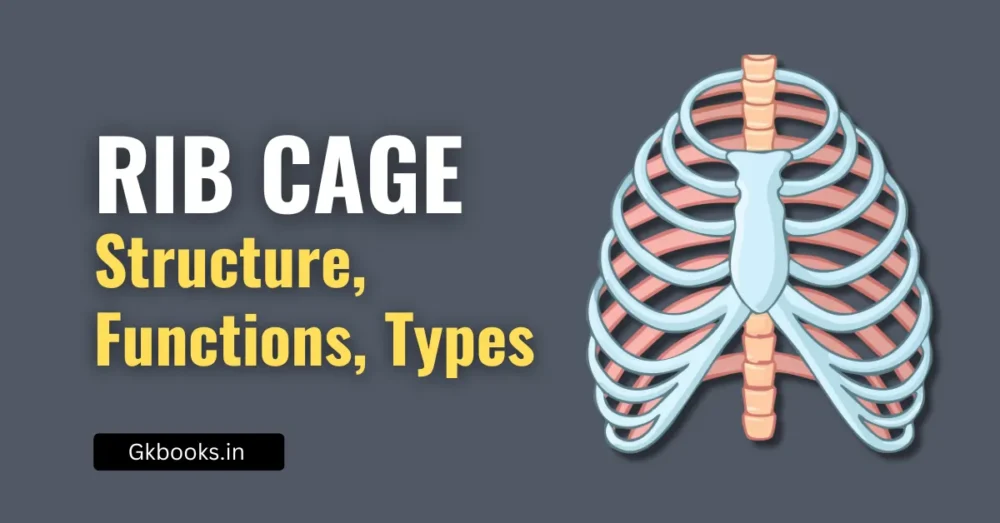The lower limb, or the leg, is made up of strong bones that help us stand, walk, run, and jump. In this blog post, we will learn about the major bones of the lower limb, based on the NCERT syllabus.
Knowing these bones is very important for competitive exams like SSC, Banking, RRB NTPC, UPSC, and other state-level exams. In the General Science and Biology sections, questions about the bones of the human body often come up.
Here, we will cover the names, locations, and functions of the main bones in a simple and easy way. This quick and clear guide will help you revise fast and score better in exams. So, let’s start learning about the strong and amazing bones that support our lower body!
📙Explore the Complete Biology Guide for Competitive Exams – Topics, Tips & Must-Know Facts!
Pelvic Region (Hip Bones)
The pelvic region connects the upper body to the legs.
The main bone here is the Coxal Bone.
- Coxal Bone (Hip Bones):
➔ Forms the hip and is made up of three fused bones:- 3 Fused Bones:
🔺Ilium: Uppermost and largest part of the hip bone.
🔺Ischium: Lower and back part; supports body weight while sitting.
🔺Pubis: Front portion; joins at the pubic symphysis (a joint between the two sides).
- 3 Fused Bones:

- Sacrum:
➔ A triangular bone that connects the spine to the pelvis.
✅ Key Tip:
Remember “IIP” for Ilium, Ischium, and Pubis – the three bones of the hip!
Thigh Bone
The thigh has only one major bone: the Femur.
- Femur:
- The longest and strongest bone in the human body!
- It articulates (joins) with the pelvis at the hip and with the tibia at the knee.
✅ Key Fact:
The femur is so strong that it can support several times your body weight!
Kneecap
Located at the front of the knee is a small but important bone called the Patella.
- Patella:
- A small, triangular bone that protects the knee joint.
- It enhances the leverage of the thigh muscles, helping you jump and run better.
✅ Remember:
Patella = Protection for your knee!
Lower Leg Bones
Two bones are found in the lower leg:
- Tibia (“Shinbone”):
- The larger and stronger bone of the lower leg.
- Bears most of the body’s weight.
- Fibula:
- A slender bone located beside the tibia.
- Provides muscle attachment, but bears less weight.
| Bone | Importance |
|---|---|
| Tibia | Major weight-bearing bone. |
| Fibula | Helps with muscle attachment and stability. |
✅ Memory Tip:
“T” for Tibia = Takes the weight!
Foot Bones
The foot is made up of three groups of bones:
- Tarsals:
- A group of 7 bones form the ankle and the back part of the foot.
- Metatarsals:
- 5 long bones connect the tarsals to the toes.
- Phalanges:
- The bones of the toes.
- Each toe has 3 phalanges – except the big toe, which has only 2!
✅ Quick Fact:
Think T-M-P for Tarsals → Metatarsals → Phalanges as you move from the ankle to the toes!
Summary Table
| Region | Main Bones | Key Points |
|---|---|---|
| Pelvic Region | Coxal Bone (Ilium, Ischium, Pubis), Sacrum | Supports the body and connects the spine to the legs |
| Thigh | Femur | Longest and strongest bone |
| Knee | Patella | Protects the knee joint |
| Lower Leg | Tibia, Fibula | Tibia bears weight; the Fibula supports muscles |
| Foot | Tarsals, Metatarsals, Phalanges | Form the ankle, foot arch, and toes |
Final Motivation for Aspirants
Learning the human skeleton may seem tough, but with a simple, structured approach, you can master it easily!
Always relate the bones to their function — it makes remembering them much faster for your exams!
👉 Stay consistent, revise often, and believe in yourself!
👉 Every step you take today brings you closer to success!
🔵 Pro Study Tip:
Draw the leg skeleton once or twice while studying — visual memory will help you retain the information better for exams like SSC, RRB NTPC, UPSC, and State PCS!







